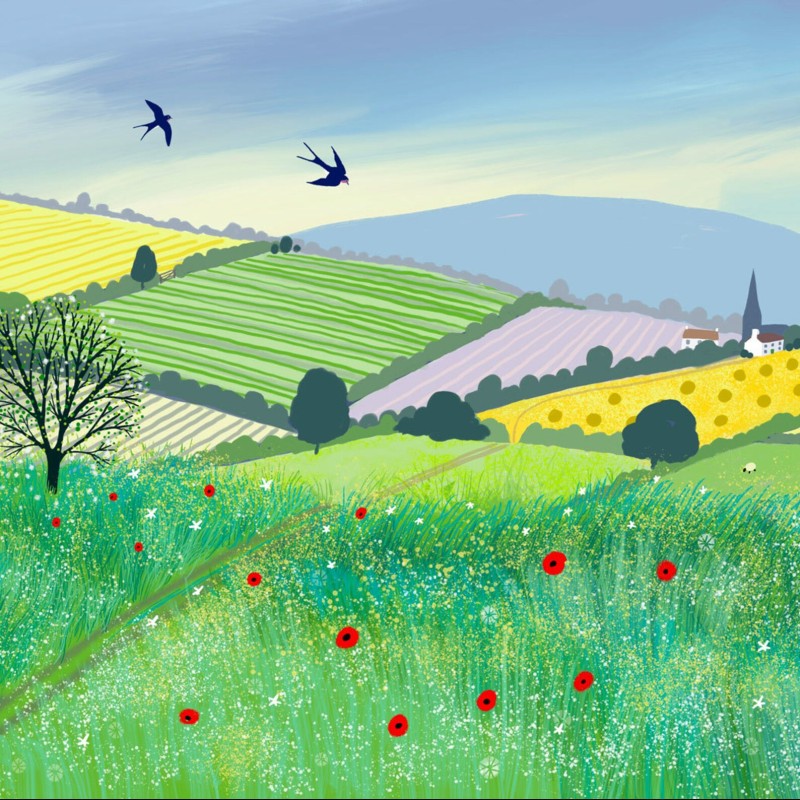
Bedfordshire is one of England’s quieter countries, situated in the East of England. Landlocked, it’s surrounded by four counties (Buckinghamshire, Cambridgeshire, Hertfordshire and Northamptonshire) and is a popular hub for London commuters, as certain areas are just 30 minutes away.
The main town of Bedford has England’s highest population of Italians, believed to be due to calls for immigrant workers a few decades ago. So you won’t find it difficult to find a good coffee or tasty meal! There are a few other towns including Leighton Buzzard, Dunstable and Biggleswade (and Luton, the busiest town due to its airport, more on that below).
Situated on the River Great Ouse, this is a picturesque county, without overtourism. The quaint villages are surrounded by the 360-acre Priory Country Park (meadows, lakes and woodlands – many off-limits to to allow wildlife to flourish undisturbed). Greensand Country is where the traditional ‘afternoon tea’ was invented, when the Duchess of Bedford got hungry at 4pm and ordered bread, butter and cake, along with her cuppa! From being the main habitats for flying kite birds (previously hunted almost to extinction) to restoring sites for endangered dormice in Maulden Wood, this is a nature paradise. It even has its own wetlands in Flit Valley (home to rare flowers and playful otters).
the chalky Chilterns (under threat from HS2)
The main natural draw in Bedfordshire are the low-lying chalk Chiltern Hills (stretching from Bedfordshire to Oxfordshire by way of Buckinghamshire and Oxfordshire). This popular walking country is home to ancient beech woods, rare flowers and the extremely rare Adonis blue butterfly. It’s also home to a pink & white ‘monkey orchid!’ This 324 square miles of countryside is very accessible, with many rail and bus routes from London and surrounding counties. Always follow the Countryside Code.
Yet in recent years, the area has been decimated by the ill thought-out HS2 project, which already has seen England’s second-oldest pear tree (in Worcestershire) destroyed. A wildlife report on HS2 says the calculations are wrong, and suggests pausing construction immediately until routes use updated methodology to remap existing routes and assess again.
The proposed high-speed train (based on projections from similar trains worldwide) will kill around 22,000 wildlife yearly once built (The Barn Owl Trust says the project is ‘a very expensive way of killing owls’). It also destroying wildlife habitats (and fresh drinking water) in precious chalk streams.
Financial Times journalist Simon Kuper lives in Paris, and regularly ‘zips into London’ on TGV (France’s high-speed train). He writes that HS2 is a ‘vanity project’ as England does not need planes, as London to Manchester is half the distance as Barcelona to Madrid. Critics say money is better spent on updating rolling stock and increasing rural public transport.
please don’t build a second terminal at Luton
The town of Luton is just 30 minutes from London, and has always been a busy place, due it being the main area for hat-making back in the 1930s (making around 70 million hats a year). However today it’s known for housing England’s fourth largest airport, which 17 million passengers each year to 60 worldwide destinations.
Air travel already has environmental concerns. Now there are plans to build a second terminal which would create more pollution and noise, and also destroy wild orchids and ancient hedgerows (natural homes for hedgehogs) to build more aircraft hangars and car parks. Considering the airport does not have great reviews, it may be best to return to focus on making hats!
local lifestyle links
Chiltern Society is at the forefront of protecting this Area of Outstanding Natural Beauty. You can use the site to report damage to stiles, gates, steps or bridges, fallen trees, fly-tipping litter, excessive flooding or blocked paths (report council issues to Fix My Street). The Chilterns also has a community magazine to keep informed of news and volunteering opportunities.
Willow Tree Distilling makes gin with a blend of 12 homegrown herbs and smoked botanicals, sold in sustainable bottles. 50p from each sale of every 50cl bottle goes to planting new trees in the Forest of Marston Vale (which is presently converted found World War II pillboxes into cave-like habitats for local endangered bats). Just a few adjustments creates ideal crevices they can roost under.
further reading
The Lea Valley Walk is a 53-mile long-distance path that takes you all the way from Luton to the River Thames, following the River Lea. Waymarked for all abilities, this trek is in nine stages and the book includes clear OS mapping with suggestions for 3, 4 and 6-day itineraries.
Walking in the Chilterns is a mini guide of 35 day walks (many within Bedfordshire) from 4 to 12 miles that take from 2 to 6 hours to complete. The OS maps are produced at greater clarity and there are local points of interests.
London’s Secret Canal is the story of River Lee which starts in Bedfordshire, and ends at Queen Elizabeth Olympic Park. Professor Lewis maps out the length of the river from locks to reservoirs, nature reserves to country parks, with info on flora, fauna and the unique charm of this little-known area.






